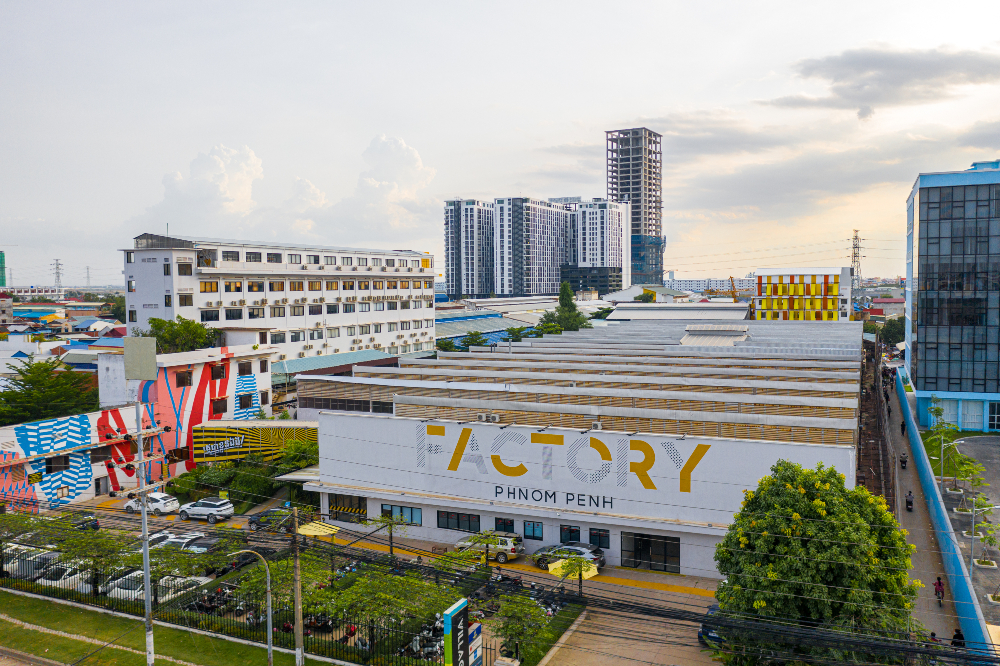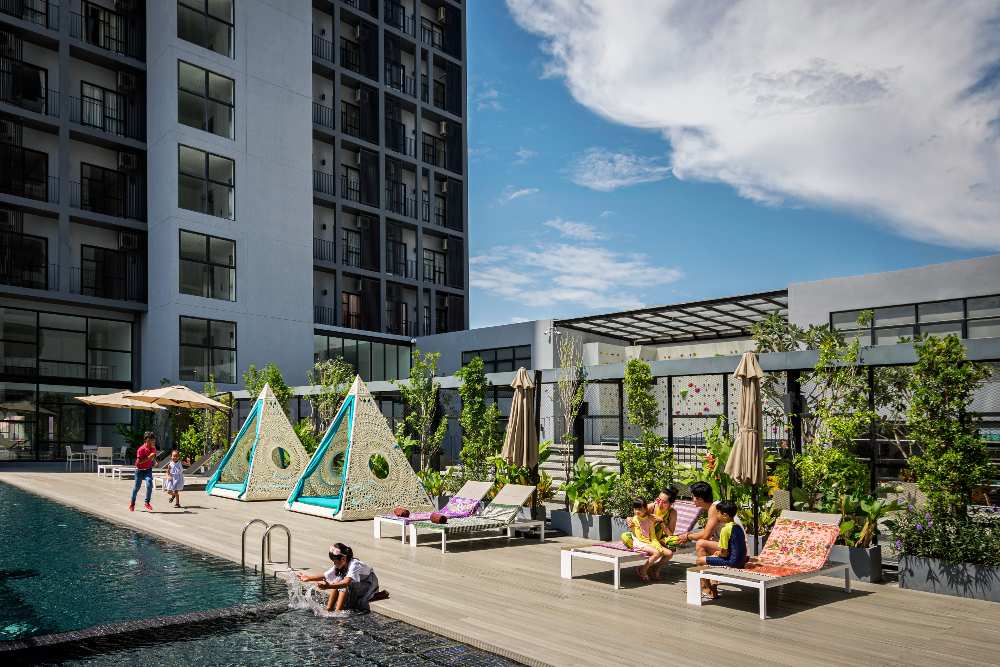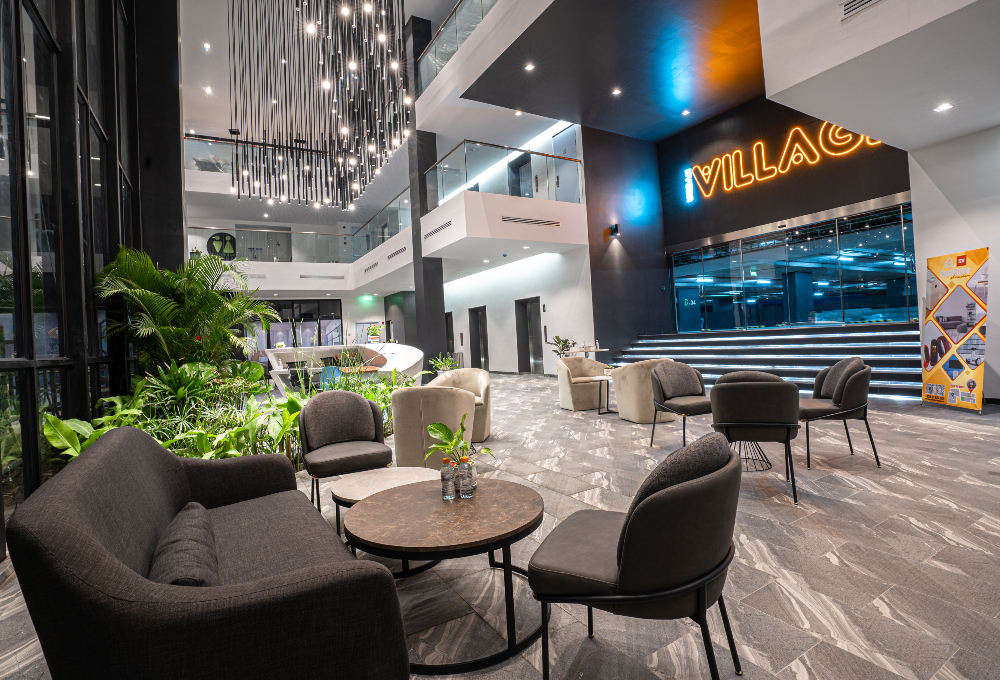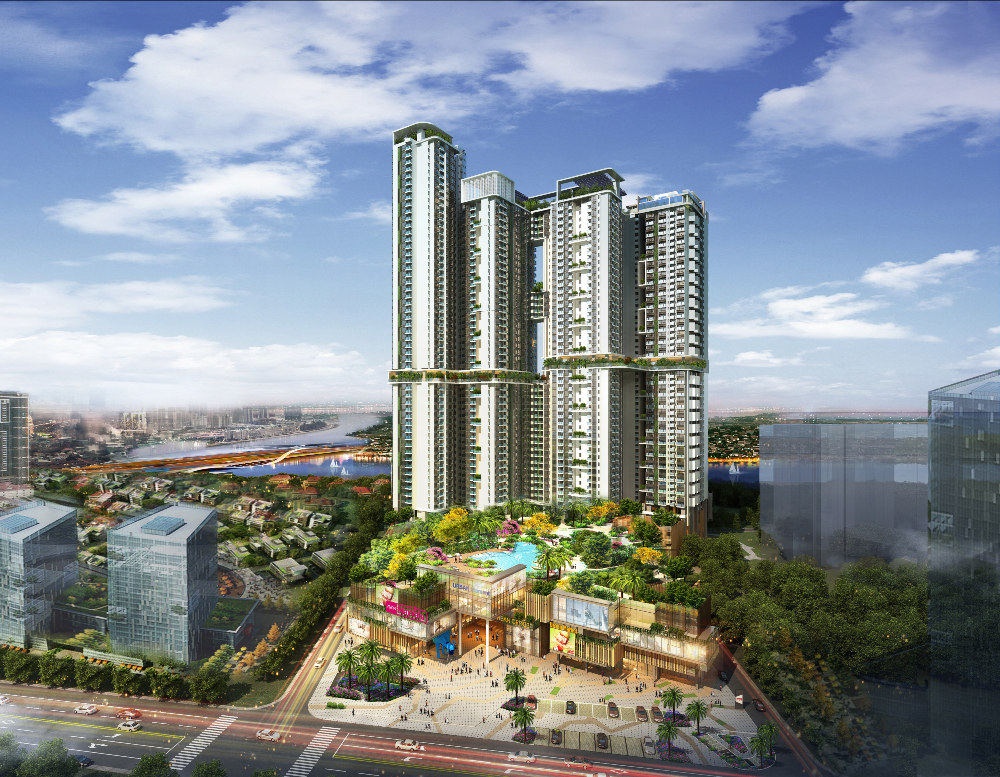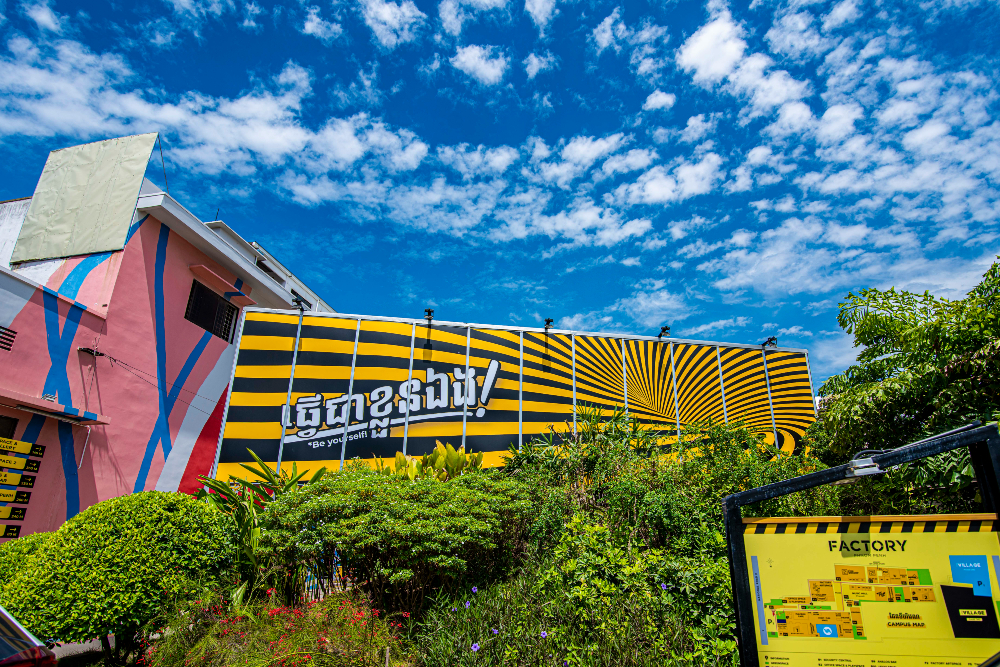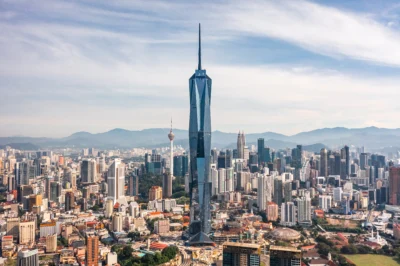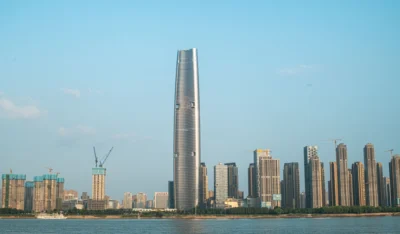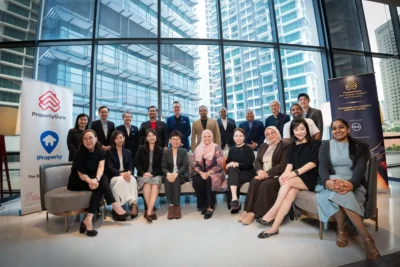A former garment factory transforms into Phnom Penh’s creative hub
From artsy, repurposed industrial spaces to towering condominiums, Urban Village and Factory Phnom Penh harnesses Cambodia’s youthful energy
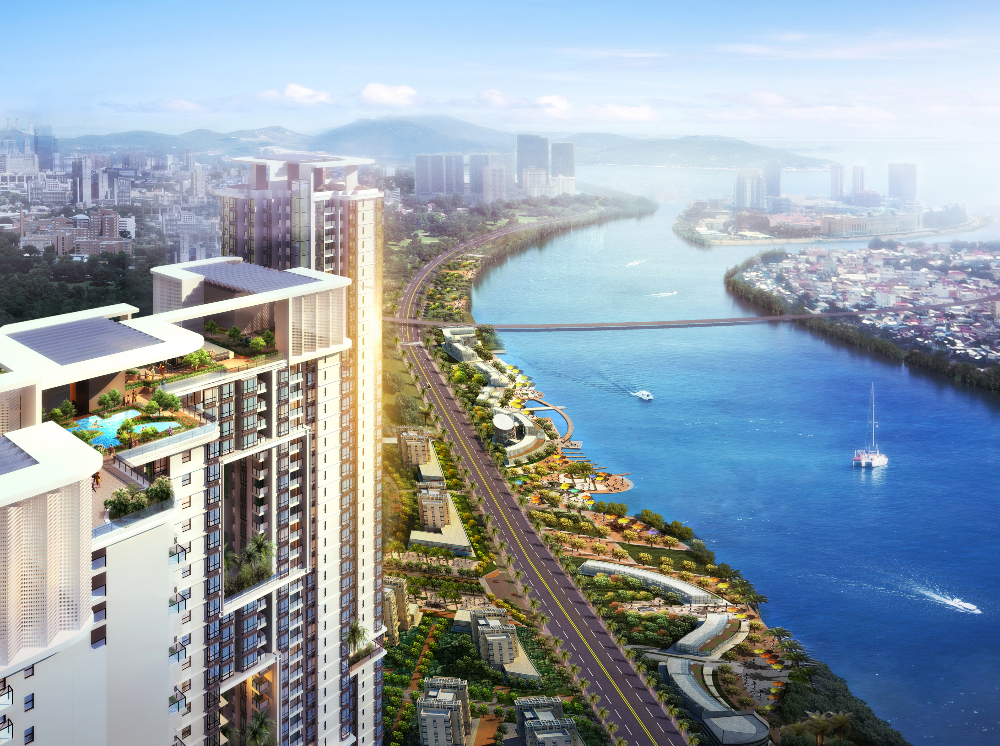
Cambodia has one of the youngest populations in Asia with two-thirds of its people under the age of 35.
Therefore, it is fitting that one of the country’s bestselling mixed-use developments, Urban Village and Factory Phnom Penh, is inundated with youth-orientated draws.
Hong Kong conglomerate Goldfame Group has a long history in the country as an operator of some of its most prolific garment factories. Its knowledge of the nation’s demographics meant it knew what it was doing when it kitted out its ambitious live-work-play showpiece.
As well as the country’s first trampoline and skateboard parks, Urban Village and Factory Phnom Penh features many cultural arts and co-working spaces.
“We are now employing our third generation of employees,” says Catherine Chan, director of Goldfame Group. “We did a lot of due diligence work and compared different countries in Southeast Asia. Cambodian people are friendly, energetic, and the population is very young.”
In 2020, Catherine garnered the Real Estate Personality of the Year title, the most prestigious accolade at the 5th PropertyGuru Cambodia Property Awards. Meanwhile, Urban Village and Factory Phnom Penh took home three major titles, including Best Condo Development (Cambodia) and Best Co-Working Space, as well as two Highly Commended honours at the same event.
With a USD1 billion price tag, the project is regarded as the largest investment by a Hong Kong developer in Cambodia. “At first, we just wanted to improve the housing for our employees through real estate development,” explains Chan. “It was getting more difficult to find decent and affordable housing in Phnom Penh due to its rapid growth.”
While this is not Goldfame’s first live-work-play project—that honour goes to Urban Loft in Phnom Penh’s fringe Sen Sok district—it is the company’s most centrally located: set between Samdech Hun Sen Boulevard and National Road 2.
Over the last 12 years, Goldfame made moves to acquire and develop the strategically located site. With China Construction (CC3) as contractor and structural consultant, Goldfame was able to complete the first phase of the project last year.
Four 23-storey buildings now tower above the site, offering 828 residences that run the gamut from studios to three-bedroom units.
A second phase, launched in early 2020, will rise even taller: three 51-storey buildings interlinked with a 60-floor tower, housing 1,850 “luxury but affordable” condominiums.
The brownfield site was an industrial complex—Levi’s jeans and Speedo garments used to be manufactured in the factories. But rather than demolish the factory complex, the multi-pronged design team of Atelier Cole, Bloom Architecture, Eden Landscape, and Mutro Design embarked on one of the largest adaptive reuse projects ever witnessed in the country.
They have since revitalized the industrial edifices into Cambodia’s citadel of cool: The Factory Phnom Penh.
“As with any project of this size, the phasing was difficult but the idea to split the project between The Factory and Urban Village proved to be a good one overall,” says David Cole, principal and founder of Atelier Cole. “The site provides a wonderful connection between National Road 2 or the river and the wider development to the west.”
The 3,500 square metres of award-winning office spaces in The Factory Phnom Penh were converted in part out of a former sewing hall. Bloom architects wanted to “retain the look and feel of a shed,” exposing the hall’s hardwood structure and keeping the cement, concrete, and corrugated steel elements in the material palette. Even a derelict water tower was turned into an oversized “plant pot” for a tree.
“We did not want to demolish this historical building,” says Cole. “As much as possible, the building fabric of the factory has been retained. Any addition has been carefully thought through.”
The Factory Phnom Penh, in hindsight, would not be out of place in Goldfame’s native city Hong Kong where cotton mills and textile factories have similarly been repurposed into creative hubs.
Many social integrations in a Khmer village happen outside, in the street or around the market space. The main idea is to create a community rather than a housing development
The 3.4-hectare complex exudes youthful energy with skateboarders and trampoline gymnasts rubbing shoulders with creative types ranging from artists to dancers to musicians.
The Factory Phnom Penh’s 2,200-square-metre “Artspace” is the nation’s largest creative hub, filled with art galleries and artisanal studios. Outdoors, spectacular murals from Khmer and foreign artists adorn the complex’s alleyways. A fleet of 50 bicycles is available for visitors to ride for free around the campus.
The thought process behind Urban Village and The Factory Phnom Penh tries to reconcile life in a traditional Khmer village with Goldfame’s urbanite sensibilities.
“Much of the social integrations in a Khmer village happen outside, in the street or around the market space,” explains Cole.
“The main idea is to create a community rather than a housing development. Historically, a village has the elements that provide us with the means to live comfortably. Urbanisation gives us the promise of greater financial stability.”
Atelier Cole has taken such communal elements to the next level in Phase 2 of Urban Village, where a podium roof boasts raised gardens and recreation spaces, plus offices, shops, and other conveniences.
“If the Factory is the soul of the development, then the podium has been designed as the heart,” says Cole. “It’s a publicly accessible mixture of a town square, high street, and park. The design concept balances the desire to keep an active streetscape level with the need to provide a substantial amount of car parking.”
The upcoming towers in Phase 2 appropriate a ubiquitous quirk of high-rise Hong Kong architecture: larger-than-life building holes. Punctured into the buildings in Phase 2, at heights of 80 metres and 121 metres, respectively, are apertures that facilitate airflow through the interlocked buildings and cool down their exterior walls.
“There was a huge amount of optimisation in the design that took inspiration from other high-density cities such as Hong Kong and Singapore,” says Cole. “The core layouts and circulation were designed to minimise waste of space. Facades and balconies were designed to be mindful of distances between units to avoid any issues.”
More: Nowhere but up: Top trends that will shape Cambodian real estate in 2022
Myriad educational facilities have become integral to Urban Village and The Factory Phnom Penh. By the same token, the mega-development now caters to a different kind of resident beyond homeowners and property seekers. Every year, The Factory Phnom Penh runs the Anyone in Residence (AiR) programme, giving artists, creatives, and startup hopefuls short-term access to the ArtSpace facilities.
“I hope that The Factory can continue to be a place that nurtures homegrown arts and tech-based startups while bringing new opportunities to residents of Urban Village,” says Cole. “Seeing all the happy faces of the visitors satisfies us the most.”
The original version of this article appeared in Issue No. 169 of PropertyGuru Property Report Magazine. Write to our editors at [email protected].
Recommended
6 developments driving Asia’s green real estate shift
Developers are being incentivised to push a green agenda into daring new realms
The Philippines’ LIMA Estate drives sustainable industrial growth
LIMA Estate models a citywide vision that uplifts workers while appealing to climate-conscious employers
Malaysia property market rebounds with foreign interest and growth
The nation’s property market is stirring to life, fuelled by foreign buyers and major infrastructure drives
China’s renewable energy surge redefines housing norms and development
From exporting solar panels to building entire green-powered neighbourhoods, China’s renewable surge is redefining housing norms

